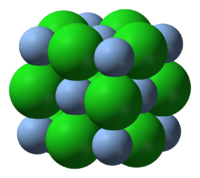
Photo from wikipedia
Several recent studies revealed the significant contribution of intensive agriculture to global climate change and biodiversity decline. However, synthetic pesticides and fertilizers, which are among the main reasons for these… Click to show full abstract
Several recent studies revealed the significant contribution of intensive agriculture to global climate change and biodiversity decline. However, synthetic pesticides and fertilizers, which are among the main reasons for these negative effects, are required to achieve the high performance of elite crops needed to feed the growing world population. Modern agro-biologics, such as biopesticides, biostimulants, and biofertilizers are intended to replace or reduce the current agro-chemicals, but the former are often difficult to combine with the latter. Chitosans, produced from the fisheries’ byproduct chitin, are among the most promising agro-biologics, and copper fungicides are among the most widely used plant protectants in organic farming. However, the two active ingredients tend to form precipitates, hindering product development. Here, we show that partial hydrolysis of a chitosan polymer can yield a mixture of smaller polymers and oligomers that act synergistically in their antifungal activity. The low molecular weight (Mw) of this hydrolysate allows its combination with copper acetate, again leading to a synergistic effect. Combined, these synergies allow a 50% reduction in copper concentration, while maintaining the antifungal activity. This is potentially a significant step towards a more sustainable agriculture.
Journal Title: International Journal of Molecular Sciences
Year Published: 2022
Link to full text (if available)
Share on Social Media: Sign Up to like & get
recommendations!